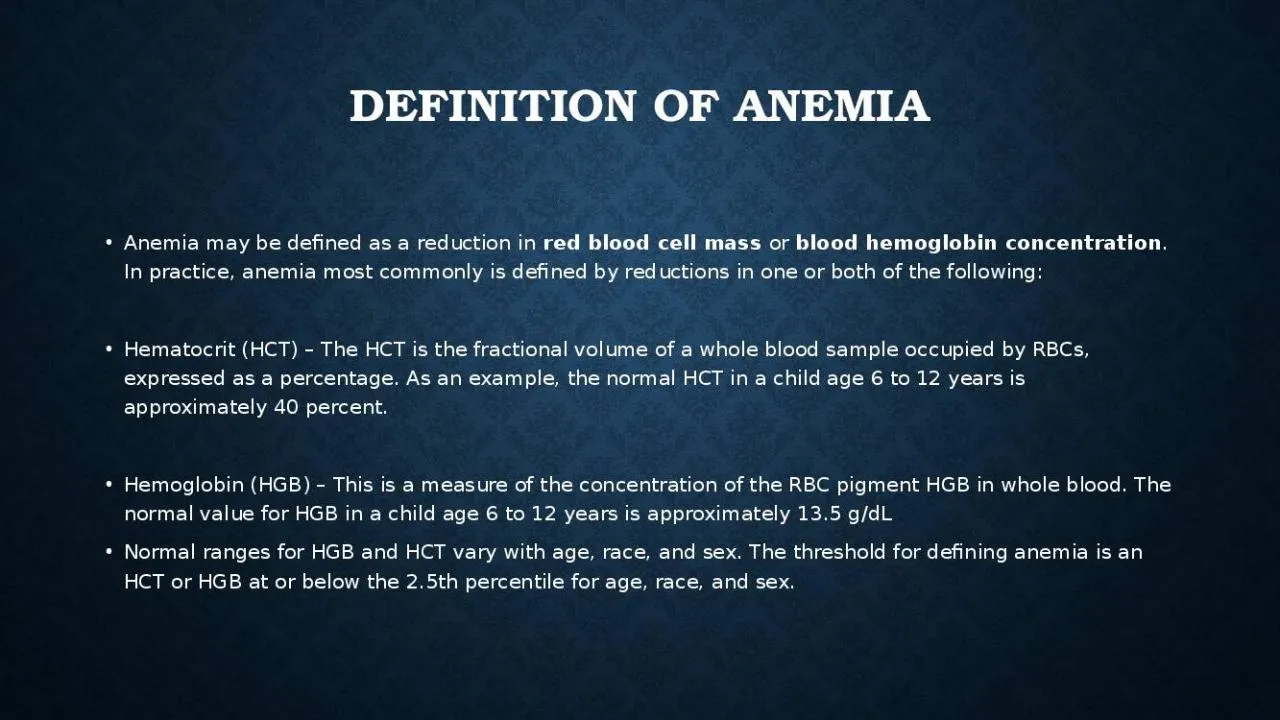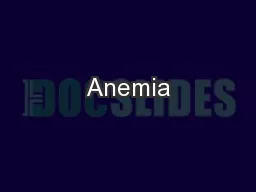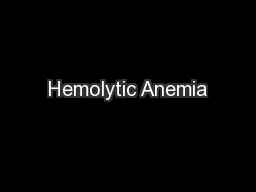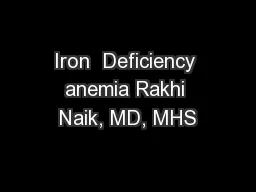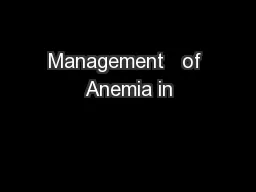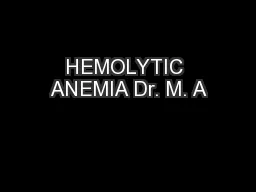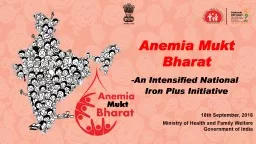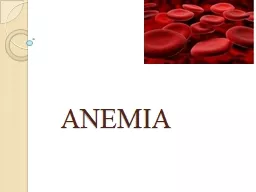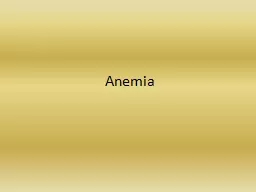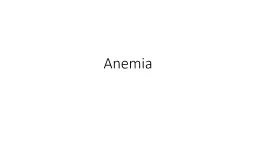PPT-DEFINITION OF ANEMIA Anemia may be defined as a reduction in
Author : clara | Published Date : 2022-02-14
red blood cell mass or blood hemoglobin concentration In practice anemia most commonly is defined by reductions in one or both of the following Hematocrit HCT
Presentation Embed Code
Download Presentation
Download Presentation The PPT/PDF document "DEFINITION OF ANEMIA Anemia may be defin..." is the property of its rightful owner. Permission is granted to download and print the materials on this website for personal, non-commercial use only, and to display it on your personal computer provided you do not modify the materials and that you retain all copyright notices contained in the materials. By downloading content from our website, you accept the terms of this agreement.
DEFINITION OF ANEMIA Anemia may be defined as a reduction in: Transcript
Download Rules Of Document
"DEFINITION OF ANEMIA Anemia may be defined as a reduction in"The content belongs to its owner. You may download and print it for personal use, without modification, and keep all copyright notices. By downloading, you agree to these terms.
Related Documents

